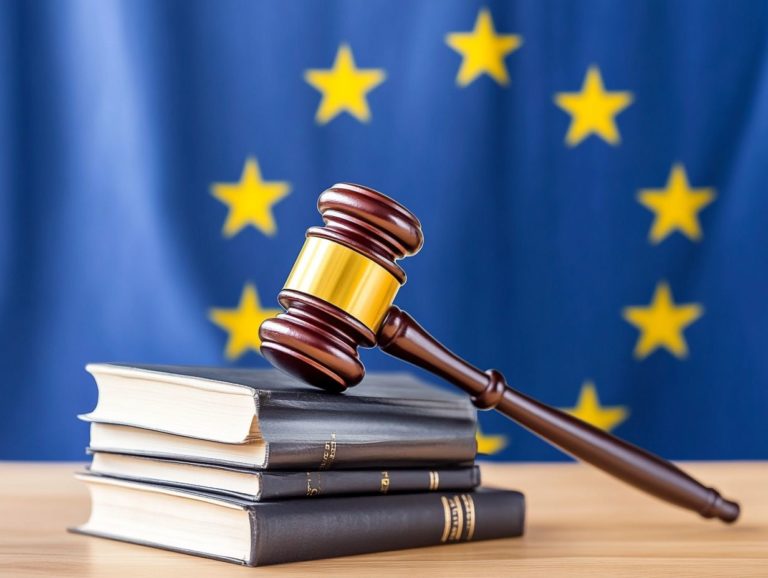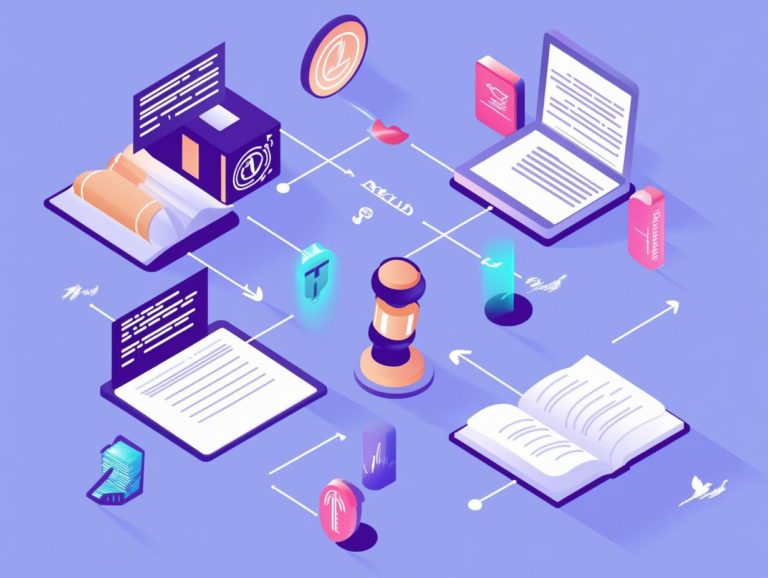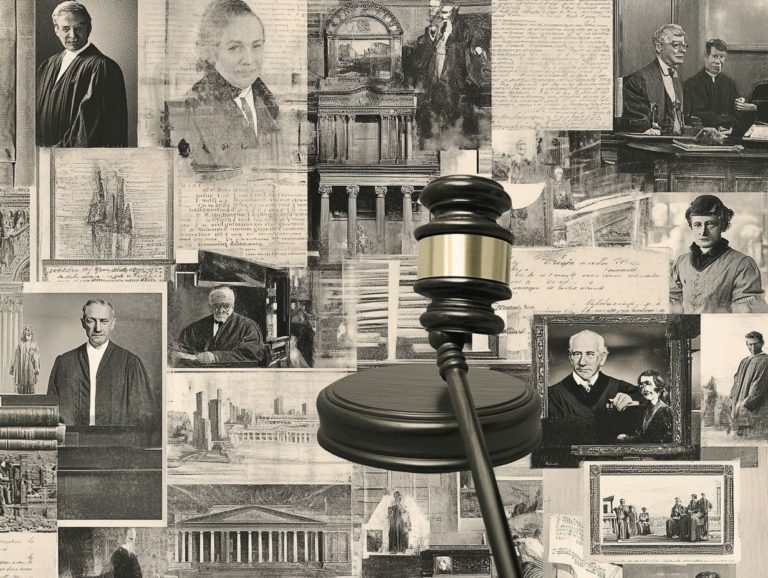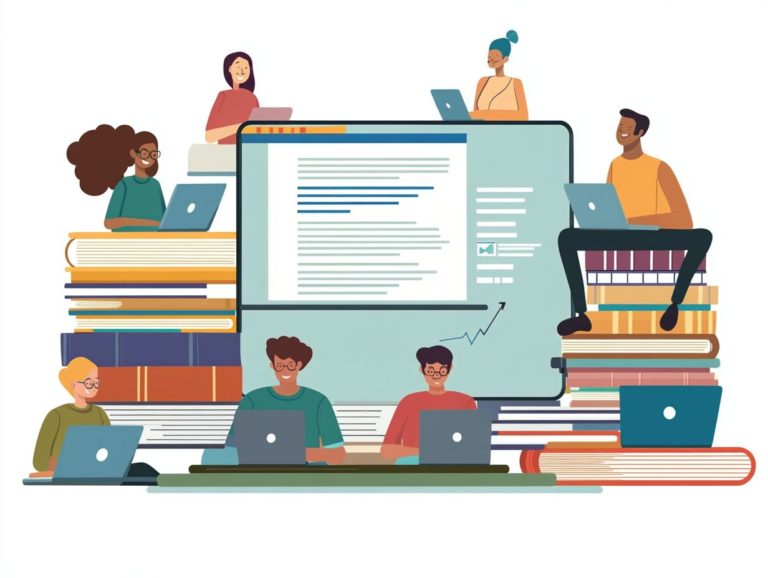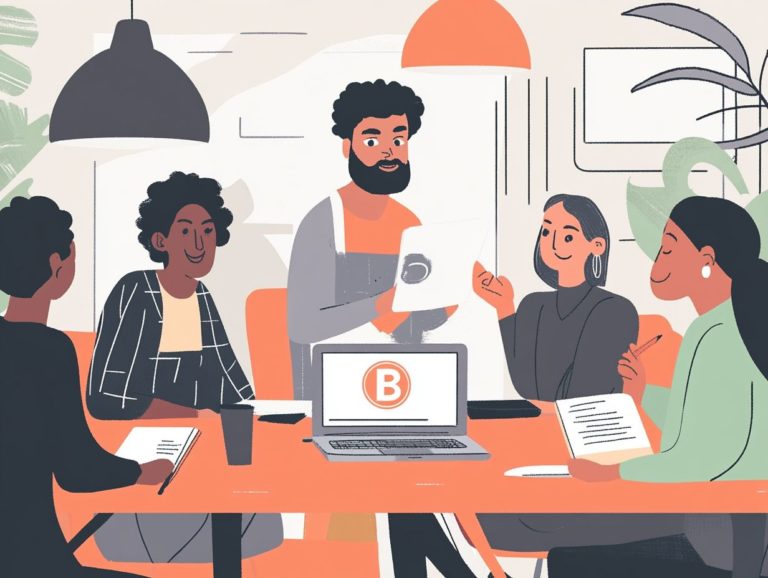Understanding Copyright in International Contexts
Copyright serves as a vital shield for your creative works in today s increasingly interconnected world.
This article delves into the realm of international copyright laws and agreements, illuminating the key treaties designed to protect your rights to your creative works.
It explores various forms of copyright infringement and the legal consequences that can ensue. Additionally, it discusses actionable steps you can take to safeguard your work on a global scale.
It also addresses common misconceptions about copyright, empowering you to navigate this intricate landscape with assurance.
Contents
- Key Takeaways:
- International Copyright Laws and Agreements
- Copyright Infringement and Enforcement
- Protecting Your Copyright Internationally
- Common Misconceptions About International Copyright
- Frequently Asked Questions
- What is the importance of understanding copyright in international contexts?
- How does copyright work in different countries?
- What are the potential consequences of infringing on international copyright laws?
- Are there any exceptions to international copyright laws?
- Can I use copyrighted material from one country in another country without permission?
- What measures can I take to protect my copyrighted material internationally?
Key Takeaways:
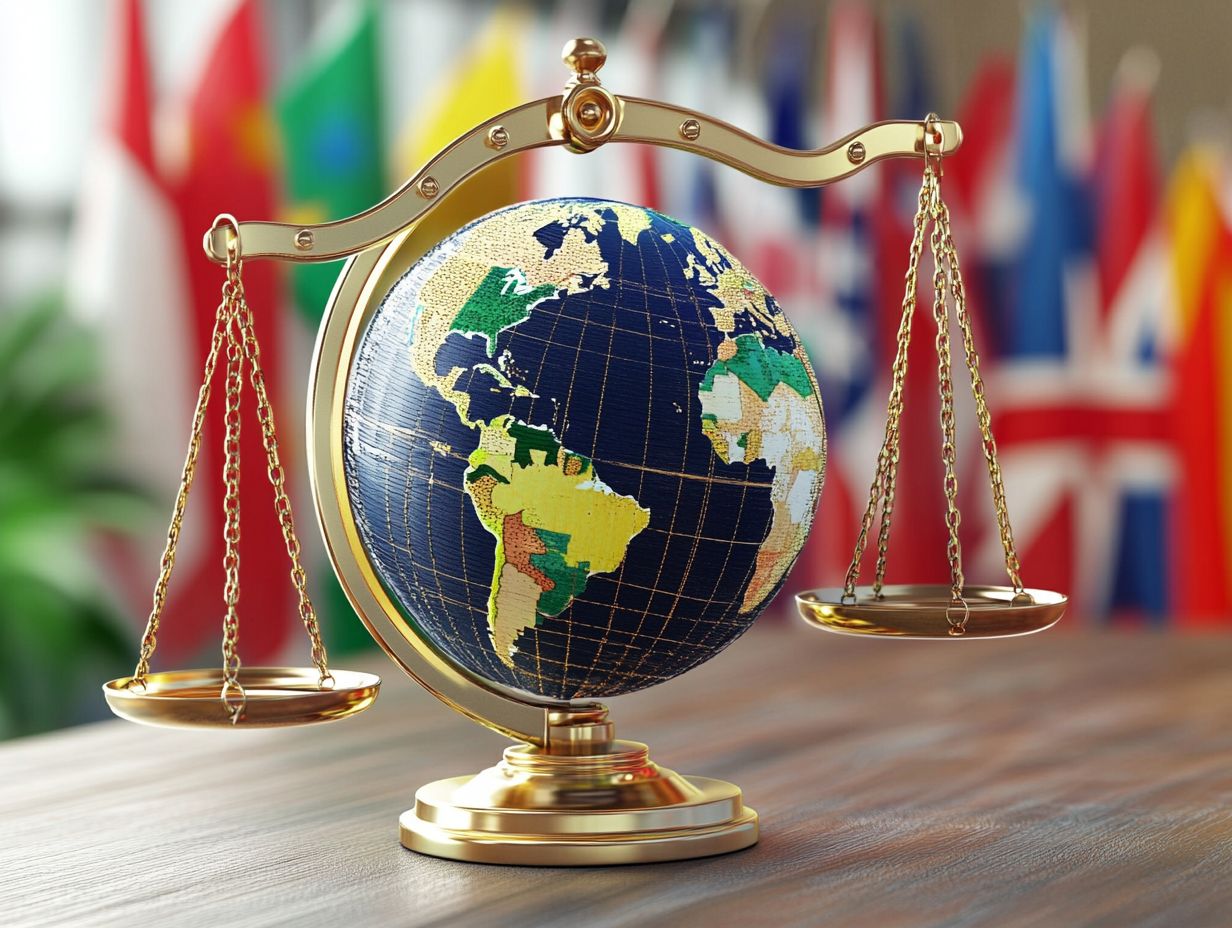
Understanding copyright is crucial for protecting your creative work in international contexts.
International copyright laws and agreements provide a framework for protecting your work globally.
Taking proactive steps to protect your copyright internationally can help prevent infringement and legal consequences.
What is Copyright?
Copyright is a legal concept that grants you exclusive rights to your original creative works. It allows you to control how they are used, distributed, and monetized.
This protection is essential in the digital age, where unauthorized use can lead to copyright infringement and significant revenue loss.
While copyright laws vary globally, they are designed to protect your interests as a content owner while balancing the public’s access to creative works.
To truly understand copyright, you need to recognize its impact on the duration of protection. This typically spans the lifetime of the creator plus a certain number of years, depending on where you are.
This legal framework encourages innovation by allowing you to register your works, providing you with legal recourse against unauthorized reproduction or distribution.
Once copyright expires, your works enter the public domain, enabling anyone to use them freely. This fosters cultural exchange and further creativity.
This ongoing interplay between safeguarding individual rights and promoting broader access underscores the continuing relevance of copyright in today s interconnected world.
International Copyright Laws and Agreements
International copyright laws offer a robust framework to safeguard the rights of creators and rights holders across borders. They ensure that your creative works enjoy consistent protection no matter where they are utilized or distributed.
Prominent international agreements, such as the Berne Convention and treaties established by the World Intellectual Property Organization, play a crucial role in harmonizing copyright laws worldwide.
These agreements effectively address cross-border issues and uphold rights to your creative works, providing a unified approach to creativity in our interconnected world.
Overview of Major International Agreements
An overview of major international agreements reveals the intricate landscape of copyright protection you navigate. Treaties like the Berne Convention set the standard for automatic copyright on creative works.
This ensures that your creations are protected across member countries without the hassle of formal registration.
Meanwhile, the TRIPs Agreement establishes minimum standards for protecting creative works, compelling member nations to enforce these laws effectively. This ultimately promotes a fair trading environment.
You ll find that additional agreements, such as the Marrakesh and Beijing Treaties, tackle specific challenges. These include access to copyrighted works for individuals with disabilities and the safeguarding of audiovisual performances.
Each of these treaties plays a vital role in shaping global copyright norms.
For instance, the Berne Convention not only guarantees that you, as a creator, enjoy protection in all member countries but also emphasizes your moral rights, which are the rights to control how your creations are presented.
This gives you the power to control how your works are used. On the other hand, the Marrakesh Treaty specifically addresses the needs of those who are visually impaired, aligning copyright with humanitarian goals.
The Beijing Treaty further enhances the protection of performers’ rights in the digital age, ensuring you receive fair compensation. This contributes to a more sustainable creative ecosystem worldwide.
Protect your creativity today! Don t let your hard work go to waste!
Copyright Infringement and Enforcement
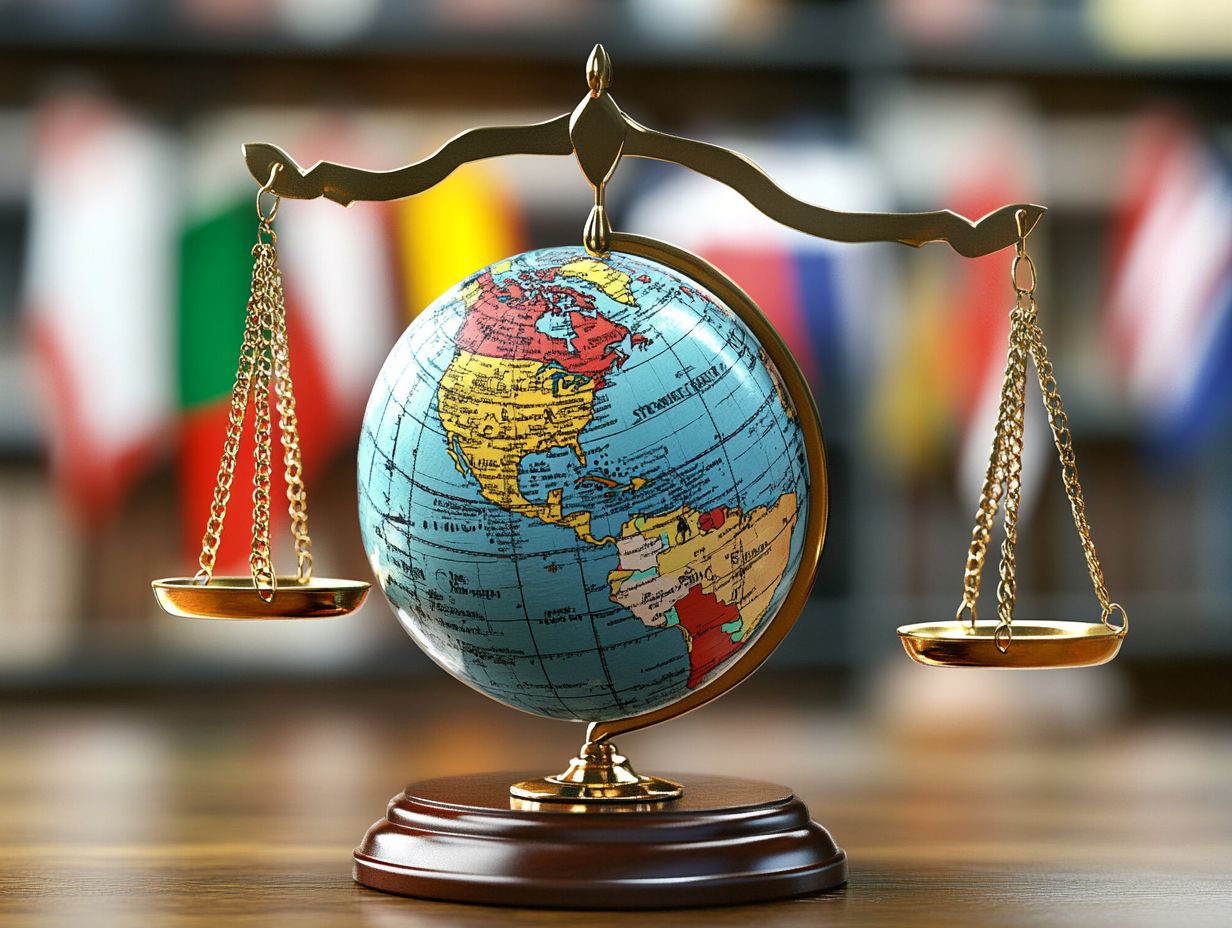
Copyright infringement occurs when you use a protected work without permission from the rights holder. This can lead to serious legal repercussions under various copyright laws.
Protecting your work is essential! Enforcing copyright provisions safeguards the interests of content owners and ensures adherence to licensing agreements. These agreements not only help monetize creative works but also deter copyright violations effectively.
Types of Infringement and Legal Consequences
Be aware of various forms of copyright infringement, including reproduction, distribution, and public performance without authorization. Each form has distinct legal consequences that can significantly affect you as the violator.
Legal frameworks often include an exceptions test to evaluate fair use against infringement. This considers the moral rights that protect a creator’s personal and reputational interests.
For example, reproduction means making copies of a protected work. Distribution involves sharing that work with the public, whether for profit or free. Public performance refers to displaying a work in a publicly accessible venue.
These actions can lead to consequences ranging from cease-and-desist orders to monetary damages, or even statutory damages in more serious cases.
Fair use may apply under specific conditions like criticism, commentary, or educational use allowing you to utilize a work in limited ways without needing permission. While this doctrine is recognized worldwide, its application varies by jurisdiction, highlighting the importance of understanding local copyright laws.
Protecting Your Copyright Internationally
To protect your copyright internationally, you need a well-thought-out strategy that includes copyright registration and a clear understanding of local laws. This approach effectively safeguards your creative endeavors.
As a rights holder, you must navigate the complexities of international copyright regulations. Employing strong copyright management practices ensures that your works are used legitimately and monetized across borders. This allows you to maximize their value while maintaining your rights.
Steps to Take for International Protection
- Act now by registering your copyright in your home country and exploring international treaties that facilitate cross-border enforcement.
- The first step typically involves submitting an application to the relevant copyright office, including detailed information about your work and your identity as the creator.
- Once registered, you can take advantage of several international treaties, such as the Berne Convention, a treaty that ensures copyright protection in multiple countries.
- Licensing agreements clarify terms of use and establish a legal framework for managing your rights and royalties, ensuring you receive fair compensation.
- As a musician, for example, you might grant specific rights for streaming while retaining others for live performances, maximizing both your reach and revenue.
- Best practices include keeping meticulous records and regularly reviewing agreements to adapt to changes in the industry.
Common Misconceptions About International Copyright
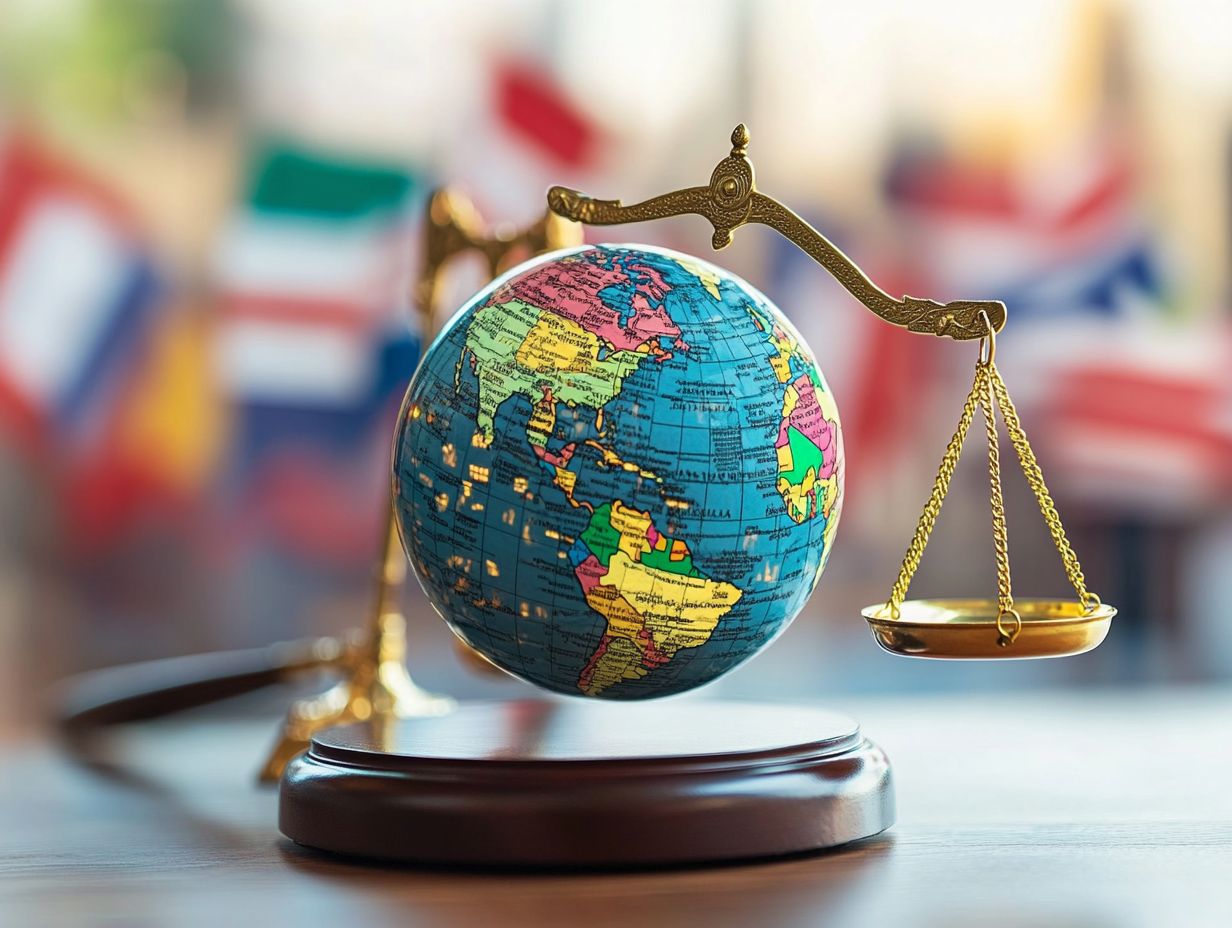
Common misconceptions about international copyright arise from misunderstandings of copyright laws. You might believe that once a work enters the public domain, it is devoid of copyright protections.
However, it’s crucial to appreciate the nuances of copyright laws. Different jurisdictions can interpret and define public domain and the extent of copyright protection differently.
Understanding these complexities is key to navigating the global landscape of copyright effectively. Take steps today to protect your creative rights!
Clarifying Common Myths and Misunderstandings
Clarifying common myths surrounding copyright protections can significantly illuminate the complexities of international copyright. It’s easy to fall into the trap of believing that the rights of creators to protect their names and works are universally recognized or that copyright protection kicks in automatically in every country. Knowing these differences is vital for navigating challenges effectively.
One prevalent myth is that any work published online is automatically protected. This misconception can lead many to overlook the critical nuances of jurisdiction and local laws.
In reality, the specifics of copyright protections can vary widely, affecting how creative works are shared and exploited across borders. For example, while some countries may offer robust rights that allow creators to maintain control over the use of their names and works, others might not recognize these rights at all.
These misunderstandings complicate relationships between artists, their audiences, and publishers, ultimately reshaping the landscape of intellectual property and its enforcement on an international scale.
Frequently Asked Questions
What is the importance of understanding copyright in international contexts?
Understanding copyright in international contexts is crucial as it allows individuals and organizations to protect their creative works from unauthorized use and exploitation. For a deeper insight, understanding the Berne Convention for copyright also promotes fair and ethical use of intellectual property across borders.
How does copyright work in different countries?
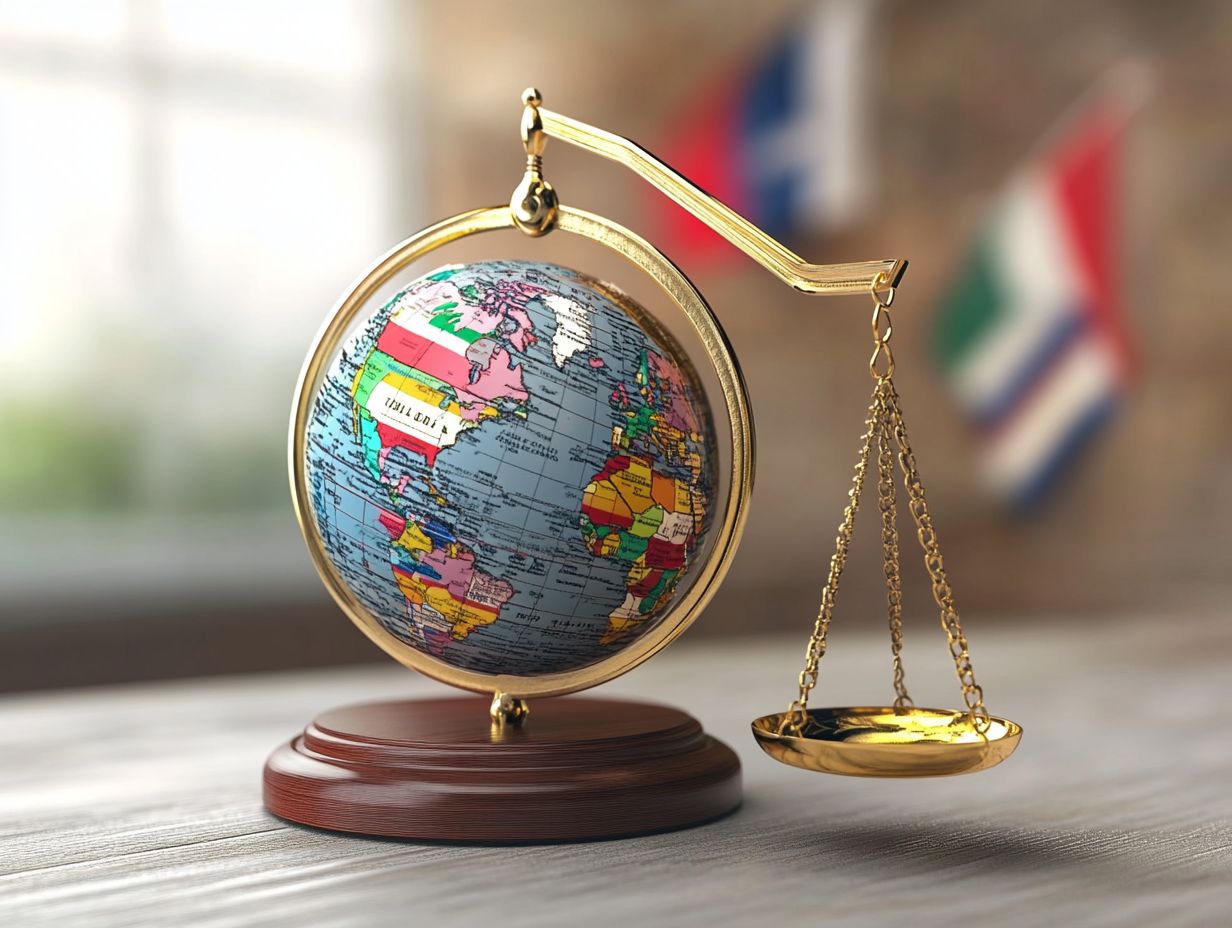
Copyright laws vary from country to country, as each nation has its own set of regulations and policies. However, international treaties and agreements, such as the Berne Convention and the TRIPS Agreement, establish minimum standards for copyright protection in participating countries.
What are the potential consequences of infringing on international copyright laws?
Infringing on international copyright laws can result in legal action, including fines and penalties. It can also damage one’s reputation and lead to a loss of income for both the infringer and the original creator.
Are there any exceptions to international copyright laws?
Yes, there are exceptions to international copyright laws, such as fair use or fair dealing. These exceptions allow for limited usage of copyrighted material without permission for purposes such as criticism, commentary, news reporting, and education.
Can I use copyrighted material from one country in another country without permission?
No, you cannot use copyrighted material from one country in another country without permission. International copyright laws protect the rights of the original creator in all participating countries, and using their work without permission may still constitute infringement.
What measures can I take to protect my copyrighted material internationally?
To protect your copyrighted material internationally, register your work with the copyright office of your country and any other countries where you want to establish protection. Include a copyright notice on your work and use digital rights management tools to prevent unauthorized use and distribution.
Act now to safeguard your creative efforts!

